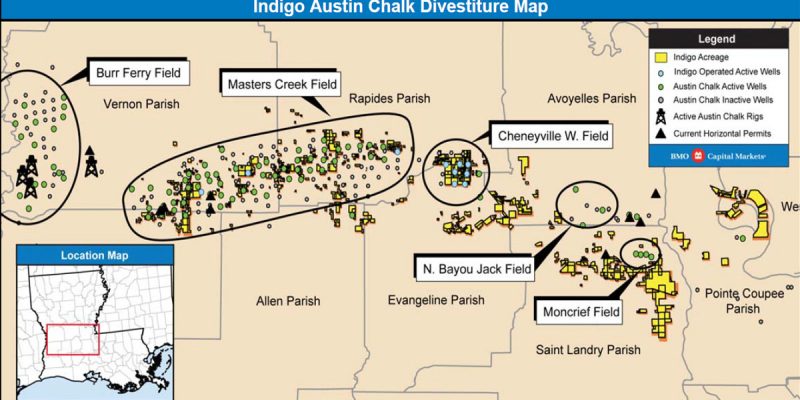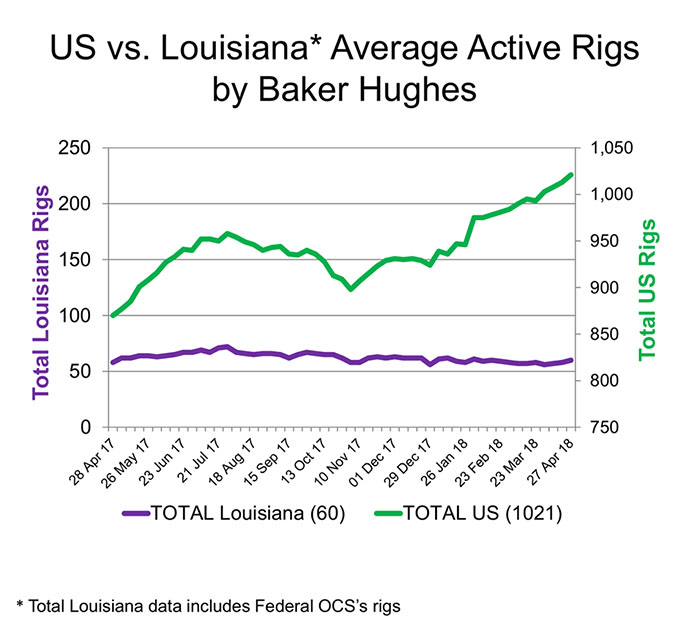We’ve had a couple of posts about the Austin Chalk, the shale oil play which runs across the middle of Louisiana from Vernon Parish to the east, passing south of Alexandria into Avoyelles and Point Coupee Parishes north of Baton Rouge, and how it’s beginning to generate some interest from large players in the oil and gas industry. Two of the big boys, EOG Resources and ConocoPhillips, have already staked claims in the field.
But now somebody else is setting up shop. Say hi to Marathon Oil, Central Louisiana!
Marathon, in its first-quarter earnings report released Thursday, said it has accumulated 250,000 net acres in multiple new plays in the past year, including a “largely contiguous position in the emerging Austin Chalk play at a cost of less than $900 per acre.”
“Critical to our long-term value creation and full-cycle returns, we captured future potential opportunities through low-cost exploration acreage additions, including a material position in the emerging Louisiana Austin Chalk play,” Marathon Oil President and CEO Lee Tillman said in the release.
EOG had been paying as much as $1,500 per acre for leases on the eastern side of the formation, in what’s called the North Bayou Jack field, in southeastern Avoyelles Parish and northern St. Landry Parish. We’re not sure where Marathon’s position is going to be.
And bear in mind there aren’t going to be hundreds of wells drilled in the Austin Chalk just yet. It’s expected this will be something of a slow rollout. Louisiana’s side of the Austin Chalk is reputed to make for more difficult drilling than the formation is on the other side of the Sabine River, and so it might be a little less economically advantageous than in Texas. Plus there is the reticence of the industry to operate here thanks to the less-than-friendly legal and tax environment.
Advertisement
But the legal and tax environment can change, and there’s an election cycle coming up in 2019 which holds the promise of better days. And the take from EOG’s test well drilled in North Bayou Jack, in which a rate of 1120 barrels of oil and 1.16 million cubic feet of gas came shooting out of the ground over a 24-hour period, made the industry pay attention.
So it might just be that Louisiana’s oil and gas industry has a future after all. You’d think this is something the state’s political leadership might consider encouraging.
Especially considering this graph…
Advertisement
Advertisement


